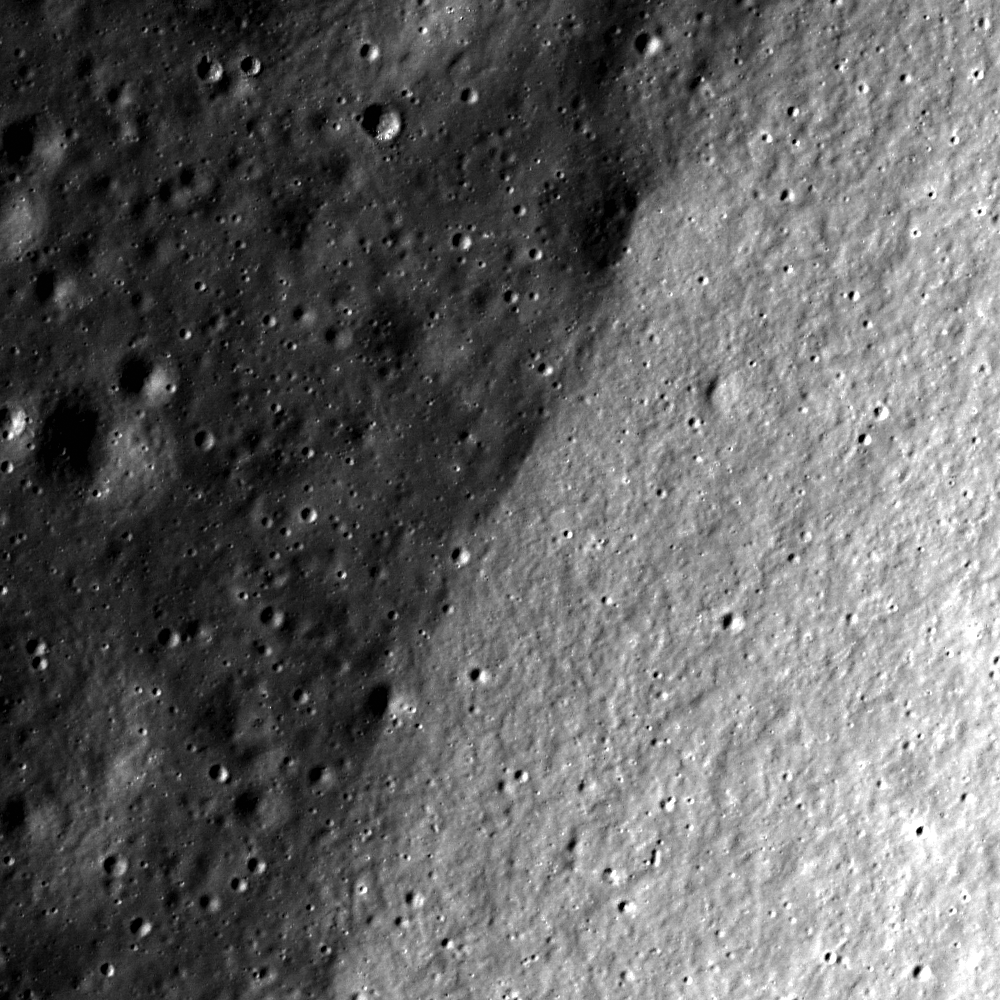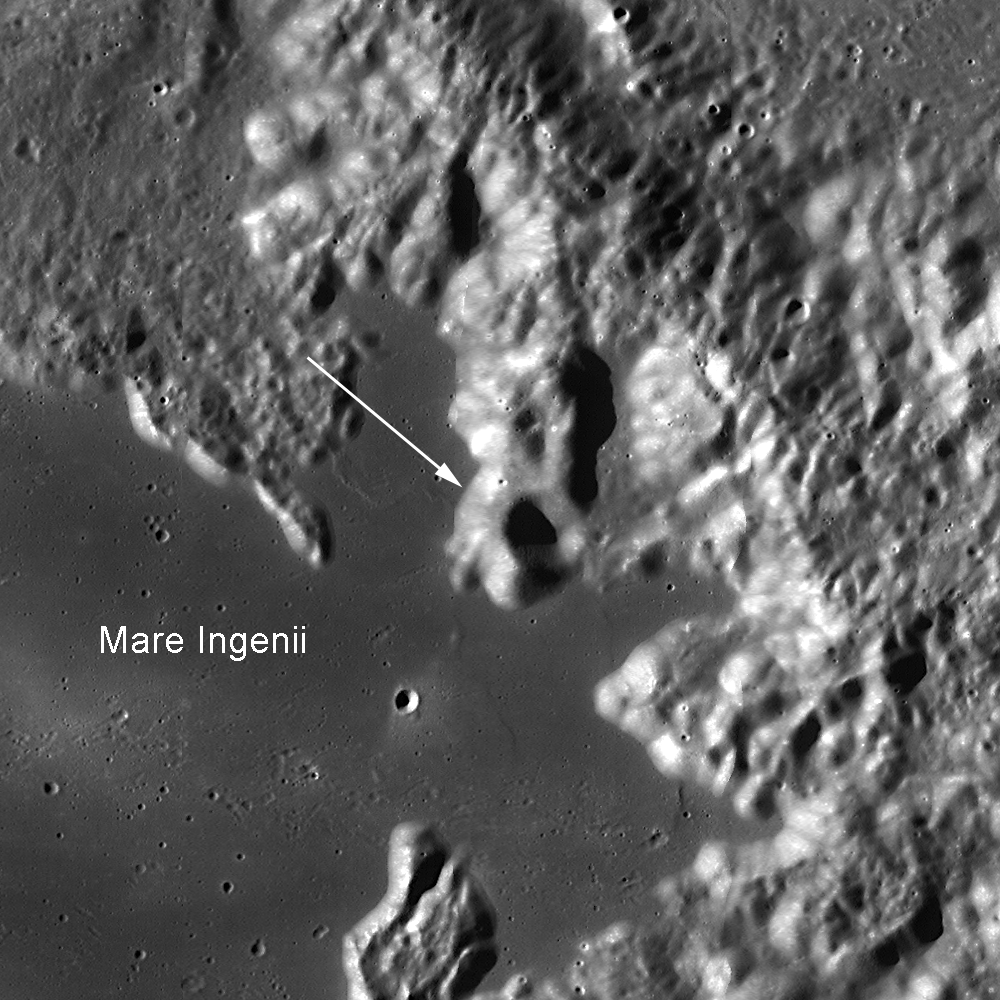
Today's Featured Image shows a very interesting dichotomy on the Moon. One half of the image displays a dark cratered surface, while the other half is lighter in tone with less craters and a different texture. What could cause the difference in brightness, cratering, and texture? What sort of geologic contact are we observing?
Perhaps the bright material is younger, and as a result has fewer craters. Young lunar craters and their ejecta have a higher reflectance than older ones, and their ejecta blankets are only lightly cratered. The darker material could be older lunar terrain that the ejecta has overlain, and we are looking at the contact between these two surface types.
We could also be observing the interior of a crater. The texture of the brighter material is consistent with textures we see on sloped surfaces such as a crater wall. The difference in crater density can be explained as a result of the sloped wall of the crater. The darker half might then be the impact melt at the bottom of the crater floor.
Another hypothesis might be that we are observing the geologic contact between mare basalts and the lunar highlands. The mare are darker than the highlands but should have fewer craters. But that is not what we observe, unless the lighter material is on a slope (such as in our crater interior hypothesis). Which one of these hypotheses is correct? Let's look at a contextual view from the LROC WAC for help.
The WAC mosaic provides the means to test our hypotheses instantly! The Featured Image is observing the geologic contact between mare basalts in Mare Ingenii and the surrounding highland material. This contact is important for the Moon since the mare and highlands are the two major rock lithologies present on the lunar surface. In fact, we can see this contact while standing outside at night and looking up at the Moon with the naked eye! While Mare Ingenii is on the farside of the Moon, the nearside maria are easy to distinguish against the lighter backdrop of the lunar highlands.
Explore more of the Mare Ingenii and the nearby highlands massifs in the full LROC NAC!
Related Posts:
Approach to Taurus Littrow Valley
Follow the highlands-mare boundary in Tsiolkovskiy!
Mare Moscoviense Constellation Site
Published by Drew Enns on 12 February 2013
